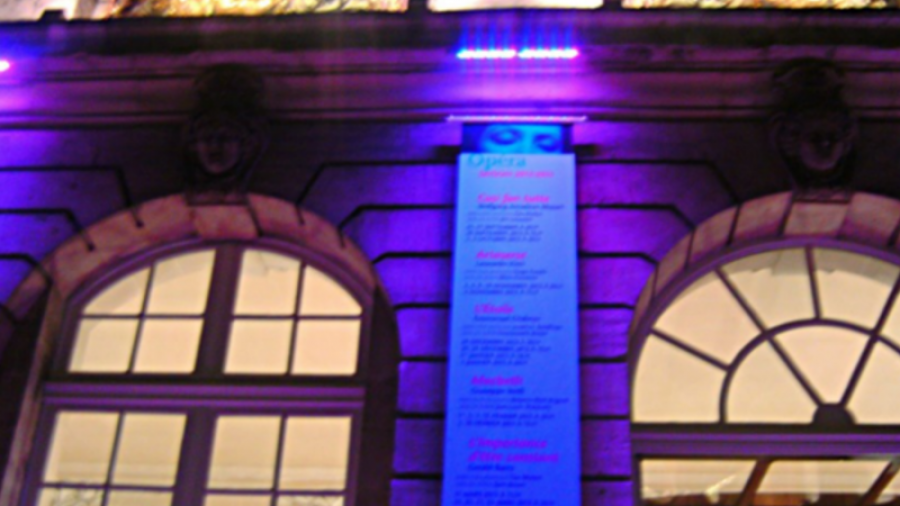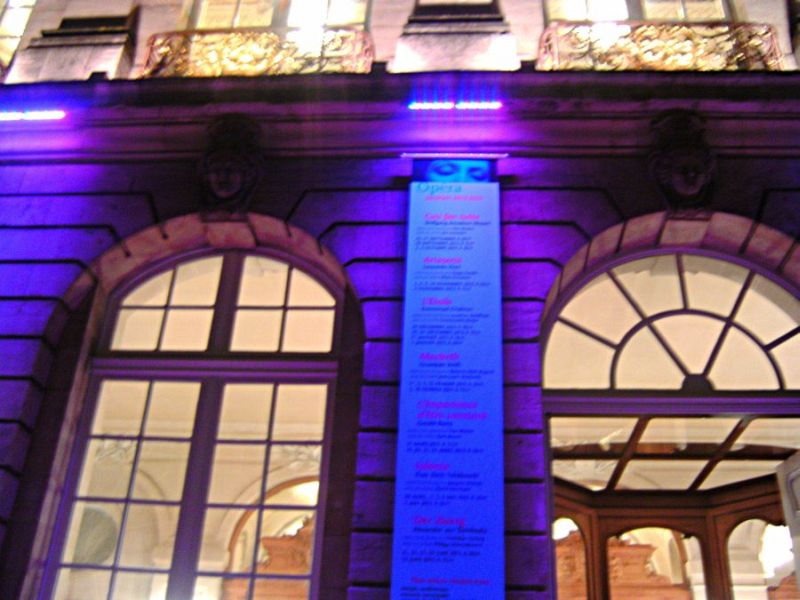by SecondoMe
The whole opera is conceived as real Baroque work of art. The artistic directors/designers or whatever they were called did a great work trying to evoke a baroque show, even if they mixed up a bit different kinds of iconographic models. I don’t exactly understand why they use a Renaissance labyrinth and not a Baroque one, but I can guess the reasons behind. They have chosen a José Ribera painting, another Baroque painting (Monsú Dessiderio’s one) about an explosion in a church and some different sort of visual references in order to create their idea of Baroque, and even if I think they could be more accurate from the historical point of view it worked so well!! I loved the idea of putting some members from the theater’s staff as a support into the scene, it was like telling us: this is only a fake, this is pure artifice! And that’s Baroque! It’s an intellectual creation! I enjoyed so much watching how the singers became their own characters in the opera. I really like this idea of “Work in progress”; it was very effective.
The central platform with the labyrinth was a great idea. It was uncomfortable for the singers, but it was very graphic/visual; when it started moving you know the aria was going to start and it conveyed the idea of stress, and dynamism when it was necessary for the comprehension of the story. The moving panels were also great to express the movement, to change the scene and to keep it dynamic!
The costumes were a mix between some sort of drag show and real baroque, they evoked the castrati’s dresses in a very effective way. In some parts of the opera I was totally fascinated about how they transform the singers into real baroque castrati. The fact they wear such complicated costumes and make-up kept us in touch with the artificiality of Baroque; it’s like a play or a send-up which really went so well with the music. This is the whole point of Baroque to create something which dazzles the audience from every possible point of view: visual, hearing and if you can add any other sense, the more the merrier! Baroque is a festival for the senses and Baroque opera is the finest manifestation of that. Maybe if you would have attended to a mass at the “Il Gesù” in Rome in the XVIII you would feel something similar; Jesuits are great creators of drama!
The singers:
Megabise: He was the lucky one with his costumes in Tamerlano style. His “Ardito ti renda” was amazing, because the audience could enjoy the power of his voice and the whole poisoned potion thing.
Artabano: Juan Sancho was such a discovery for me. His voice was so powerful and different from the others, and I loved his acting. He was really a bad bad father and friend; a gorgeous villain! I think the audience was quite unfair with his singing; most of his arias were great, but “Non ti son padre” was fantastic, and “Amalo e se al tuo sguardo” was simply amazing – my favourite one!!
Mandane: Cencic was as accurate and flamboyant as ever. Even if for me it was difficult to see him as a woman, he actually acted great. His arias were especially written to show off and he succeeded as usual. I loved so much his “Dimmi che un empio sei”, in which he showed the powerful character that Mandane has. His last duetto with Arbace was pure delight as well as “Se d’un amor tiranno”.
Semira: The biggest surprise for me. After 10 minutes I completely forgot about she being a he. Valer was just perfect; on CD I didn’t like him so much but in scene he was great. His voice was soft and warm, the most feminine one. His arias were not the most beautiful ones, but I enjoyed so much “Torna inocente” and “Bramar di perdere”.
Arbace: Fagioli is a true show-man – maybe too histrionic for me – but for Arbace’s character he was just splendid. His voice is out of this world, pure acrobatics; my only regret is that he doesn’t touch me enough. I mean, I was amazed by his range and his high notes as well as his low ones, but … maybe he is too much artifice for me, I don’t know. In “Vo solcando” I felt overwhelmed by the beauty and the whole Baroque paraphernalia. The scene was conceived as a send-up but even though I thought it recreated amazingly the castrati’s realm!! Fagioli was totally in this character and his singing was superbe!!
And getting to the real point…
ARTASERSE-FELIPE: His acting is far too good to be true; I can’t understand why he doesn’t feel like that. His Artaserse was a very plausible confused son, totally in love with Semira, a loyal and honest friend, betrayed and indecisive, and royal and merciful at the end. He enacted a great “galleria degli affetti” in his character. His costumes were quite better that I was expecting, since it seems that the poor thing has always someone who hates him in the dressing room!
In the nightgown he sang the beautiful “Per pietà, bel idol mio.” That aria was impregnated by such a sadness and sweetness that the audience remained in a admired silence for a while after he ended…
In his second “dress”, even with those spines and feathers he looked amazing, totally in pain after sending his brother to death and seemingly betrayed by Arbace. When he sang “Deh respirar lasciatemi” I was myself about to die… he was simply superb. I love that aria; is very particular and very different from the rest of the opera, and he rendered it showing how disconcerted and indecisive he was leaning onto the stairs. People were quite cold, he should have received a warmer applause.
The second act started with “Rendimi il caro amico”, one of the best moments. He actually rendered it with such intention that it seemed more a declaration of love than a desperate plea for his friend. He was absolutely gorgeous with his Louis XIV dress and in his “Non conosco tal momento” he addressed the public with a strong intensity, talking about pietà, that it is impossible not to feel moved. In his last aria “Nuvoletta opposta al sole” – even if it is not the most beautiful one – he explores his comical side, especially after his delightful pantomime with Arbace minutes before!
Artaserse’s arias are not the best ones in the opera, but Philippe did an amazing job; he actually knew how to make them look better. It was a difficult task since Arbace’s and Mandane’s were just jewels for a singer. He succeeded far beyond what I could have imagined before seeing the stage; his voice was pure and crystalline and full of nuances. Great diction as usual! Philippe’s voice was a delightful contrast with Fagioli’s. The Argentinian was far too much affected and theatrical, while he found a great balance between the comical and the tragic!
The end was just excellent, I was without words!! That glitter and feathers apotheosis was just perfect, a banquet for the senses!!!
I think the whole idea was Cencic’s so I have to say: WONDERFUL WORK MR. CENCIC!
Of course the Concert Köln and Fasolis were excellent!
I only missed a better audience. They clapped a lot but I feel they were only there for Fagioli – okay they also gave great applause to Philippe at the end. Somehow I felt they didn’t notice how brilliant the whole cast was, at least not in the individual arias. It was such a mazing team work and all of them were great. I felt sorry for Cencic; he was also wonderful and he would have deserved more. However, the ovations were actually amazing, especially after “Vo solcando” and at the end, and they were warmer or more enthusiastic on Thursday than on Tuesday!



Thank you very much for this detailed and heart-felt account of the performance! I feel excited and happy just reading it (as if I’ve been there myself)! Lots of Love! xx
Thanks, you’re very kind 😉